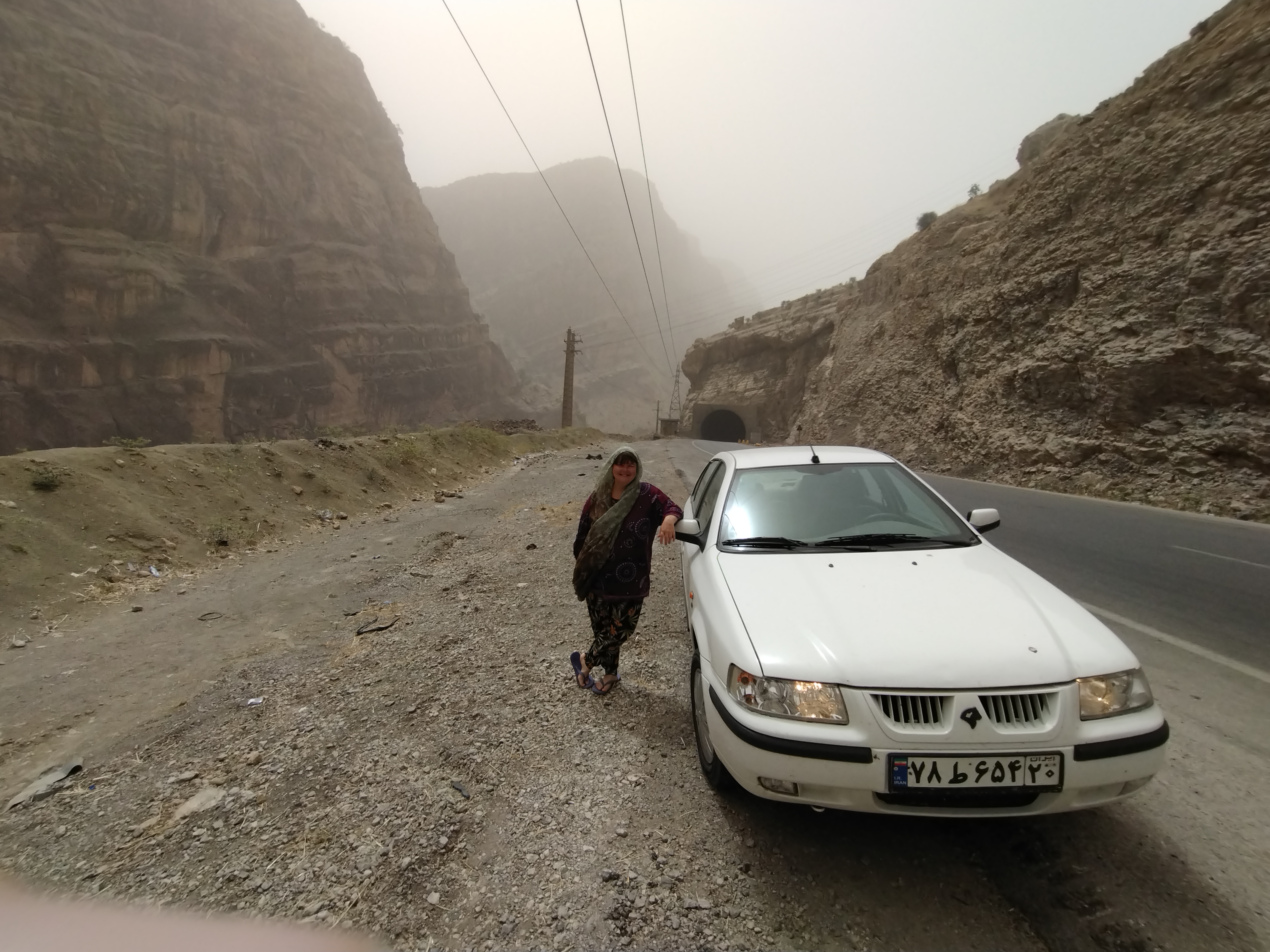Not for the faint hearted, renting a car in Iran can be a hair-raising experience but one that is definitely worth it if you’re game. Driving in Iran is manic, chaotic and at times downright scary. Motorcyclists seem to come out of nowhere, 2 lanes get turned into 4 and cars randomly drift over the road. Driving in the lane is seen as optional, as is following red lights, although it’s usually only motorcyclists that run red lights and in most places very few cars actually do. The cities are where your skills are really tested as you need to be watching every single angle to see for cars, bikes, buses, pedestrians, and everything in between. Once you’re out of the major cities, the drives become a lot more comfortable, though you’ve still very much got to have your guard up.
Of course, the benefit of renting a car is that the world is your oyster, well at the very least, Iran is your oyster. Like anywhere, you can drive the entire width and breadth of the country, with no special permits or internal checks hampering your drive. Staying an extra day in somewhere you found particularly appealing becomes an easy option, especially in a country like Iran with so many great accommodation options, but so few travellers. You’ll also be likely to be invited to someone’s house, or suggested a site you never knew existed by a helpful local, and having a car makes those spontaneous adventures possible.
Finding a rental company can be difficult as there simply aren’t many options and very few have websites in English. Then again if you’re not on a guided tour, navigating public transport in Iran can be extremely difficult. Locals usually only know the route they use and don’t have much knowledge of the system as a whole. Likewise, it’s so uncommon for foreigners to use public transport, other than the metro in Tehran, that they’re a bit confused why you’re there at all.
Once you’ve found a rental company, dealing with them can be difficult. You’ll feel like you’ve found a good deal only to find out the car you wanted isn’t available and then there is a list of add-ons you previously hadn’t expected. It’s impossible to communicate with them, and like it’s the most complicated thing in the world. It seems like they’re trying to rip you off, but more likely than not they’re just confused. We found the best thing to do is to go directly to the rental agency in person. All of a sudden, the car you wanted is available at the correct price, insurance is no longer an issue, it's all super professional, and everyone is amazingly friendly and obliging.
Once we had decided on an agency, we decided it would be easier to ring. When we rang we were told they only message via WhatsApp, so we began messaging via WhatsApp and essentially got nowhere. For 2 weeks we kept asking where they were located in order to pick up the car we wanted, thinking we’d already made a reservation, and during each WhatsApp conversation the car we had agreed to in the previous conversation was suddenly no longer available.
You might be thinking “well why not get a local to contact them, as there might be a language issue?”. Guess what? We tried that too! Only to find via telecommunications they were even more unhelpful to a local native speaker than a foreigner. And still only wanted to message via WhatsApp where we kept going around in circles.
On our most recent visit, we arrived at the car rental agency having booked a Peugeot 206 for 25 Euros per day, but secretly hoping to get the Samand for only 17 Euros a day which was apparently no longer available. We asked whether this car was available instead to which they responded “sorry it isn’t, it’s being used until 11am”. Something you would expect they would have explained when told us originally we could no longer book this car. In this case we were happy to wait the 90 minutes to get the more affordable and larger car.
The cars which are available range from cheap locally made cars such as the Peugeot Pars, Saipa Saba or the Samand. The rates usually range from around 17 to 25 Euros per day with a 300 Euro deposit to be paid in cash. Foreign cars such as Hyundais and Toyotas are also available but often cost as much as 40 to 60 Euros per day. Don’t forget either, that petrol is cheap, really cheap. At the time of writing unleaded petrol is 30000 Iranian Rials per litre, which is roughly 10 US cents. That means you’re filling your whole car up for as little as $4-5!
The one good thing about city driving in Iran which one needs to remember is that despite the absurdity of the traffic conditions, it all occurs at quite slow speeds as you can rarely even reach 60km/h driving in a city like Tehran. On the expressways (motorways) you’ll see most people driving at 120-140km/h, but you can just keep over to the right (make sure you remember Iran drives on the right if you’re from one of those left driving countries like I am), making sure to keep your eyes out for bikes, beggars, or most concerningly, some dude who thought it was a good idea to reverse back at the side of the expressway, and let them go flying past if those speeds aren’t for you.
One last point to make is that women can drive too! Females genuinely have nothing to fear about driving in Iran, well no different fears to those men will experience. You’ll see many women driving and even female taxi drivers. Although men are still the majority of drivers, it just such a normal occurrence that no one will even blink an eyelid that you’re behind the wheel of a car.



